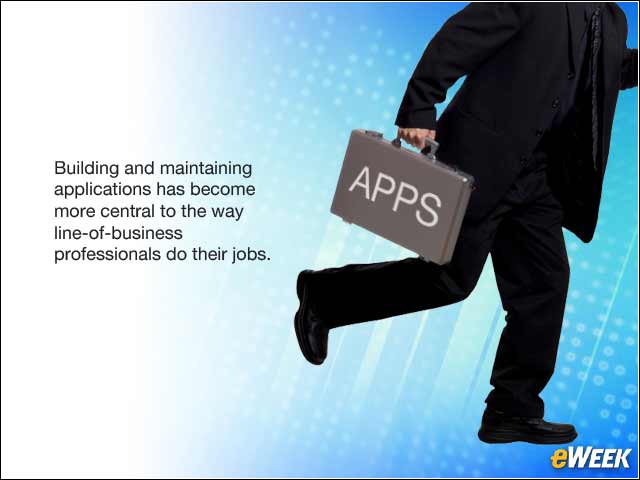eWEEK content and product recommendations are editorially independent. We may make money when you click on links to our partners. Learn More.
19 Ways Citizen Developers are Changing the Software Landscape
2Applications Are Being Developed Much Faster
3Citizen Developers Are Building Higher-Tier Applications
4Building Applications Is Becoming a Daily Responsibility
5Use Cases for Citizen Development Apps Are Growing
On average, organizations estimate that a platform supporting some portion of development by line-of-business developers could be used to build 26 different types of applications. IT help desk, project, asset and workforce management were selected among the top use cases for no-code development by survey respondents.
6Customer-Facing Software Is Growing
The customer experience now more than ever is a key business driver. Applications must adapt easily and quickly to reflect rapidly changing customer needs. This year, citizen developers at 35 percent of organizations report building customer-facing web and mobile applications, up from 27 percent in 2015.
7IT Department Backlogs Are Shrinking
For IT developers, trying to keep up with demand for custom applications is a never-ending battle that often generates a large monthly backlog of unfulfilled requests. Citizen development platforms reduced backlog by 65 percent on average, compared to traditional development platforms, helping IT meet its service level agreements (SLAs).
8Citizen Developers Are Being Leveraged Across the Organization
9Collaborative Development Models Are Emerging
The spread of citizen development has created opportunities for IT and the business to collaborate — and ultimately build better apps to an exact set of specifications or process. This, in turn, drives higher operational efficiency and team productivity. According to survey respondents, a business-led collaboration method is most common (62 percent of organizations), under which citizen developers take primary responsibility in the app-building process, requesting help from IT only as needed.
10Skill Sets Are Growing Among Citizen Developers
Though citizen developers use tools that don’t require coding, not all are without technical ability. Application builders involved in citizen development have an expanding set of technical skills that enable them to create applications ranging from simple workflows to more mission-critical or externally facing applications. Front- or back-end scripting skills now can be found in 44 percent of application builders, up from just 36 percent in 2015.









